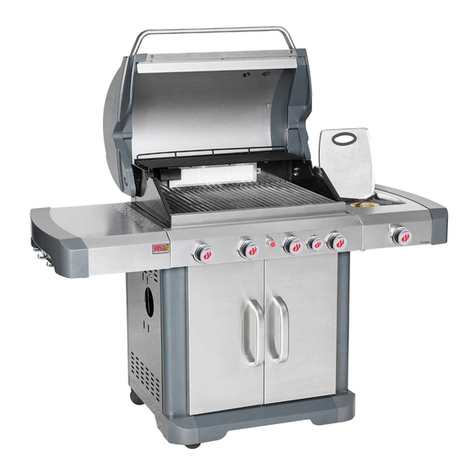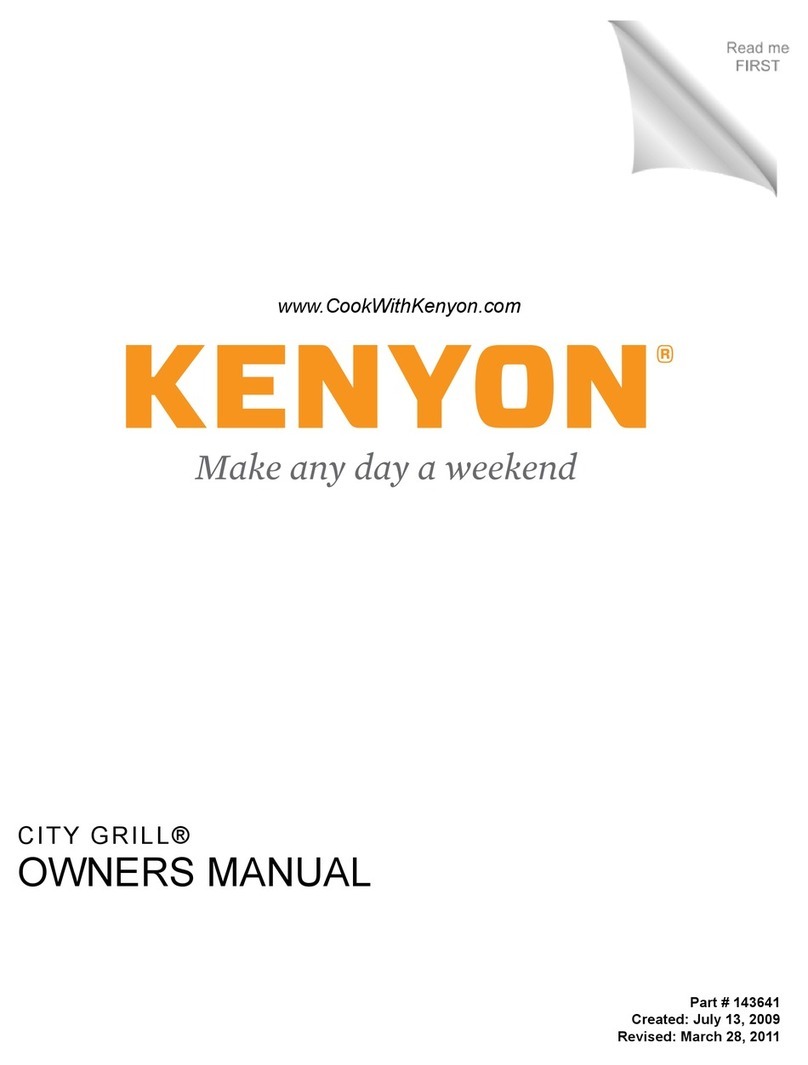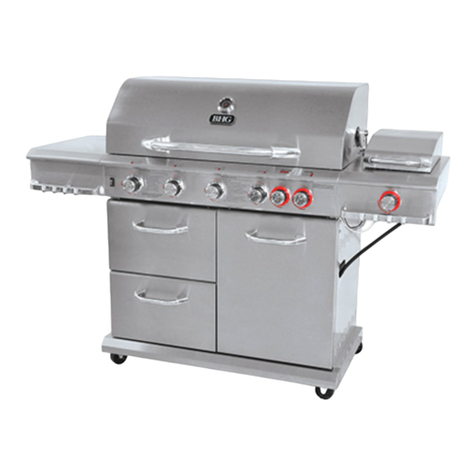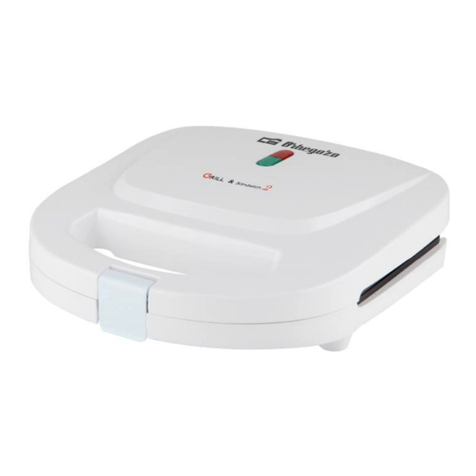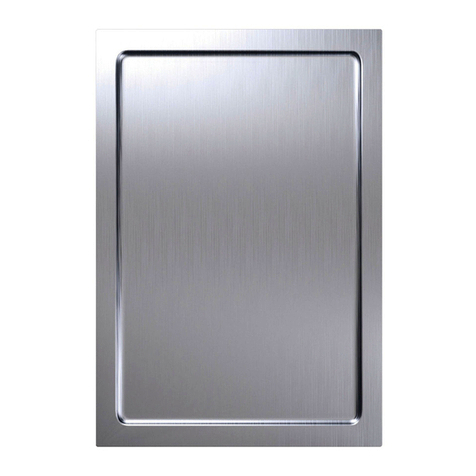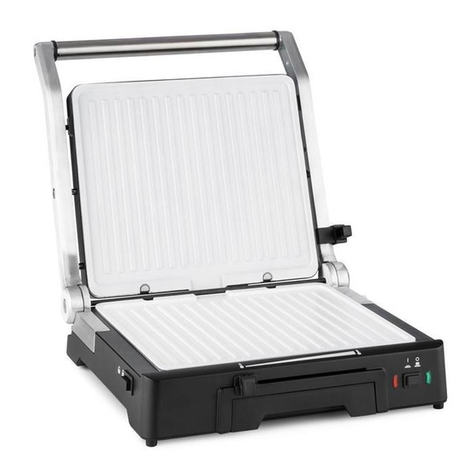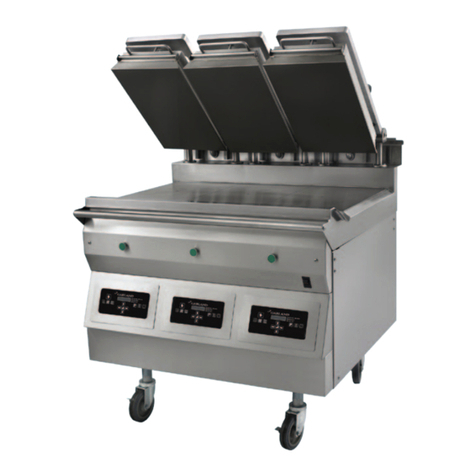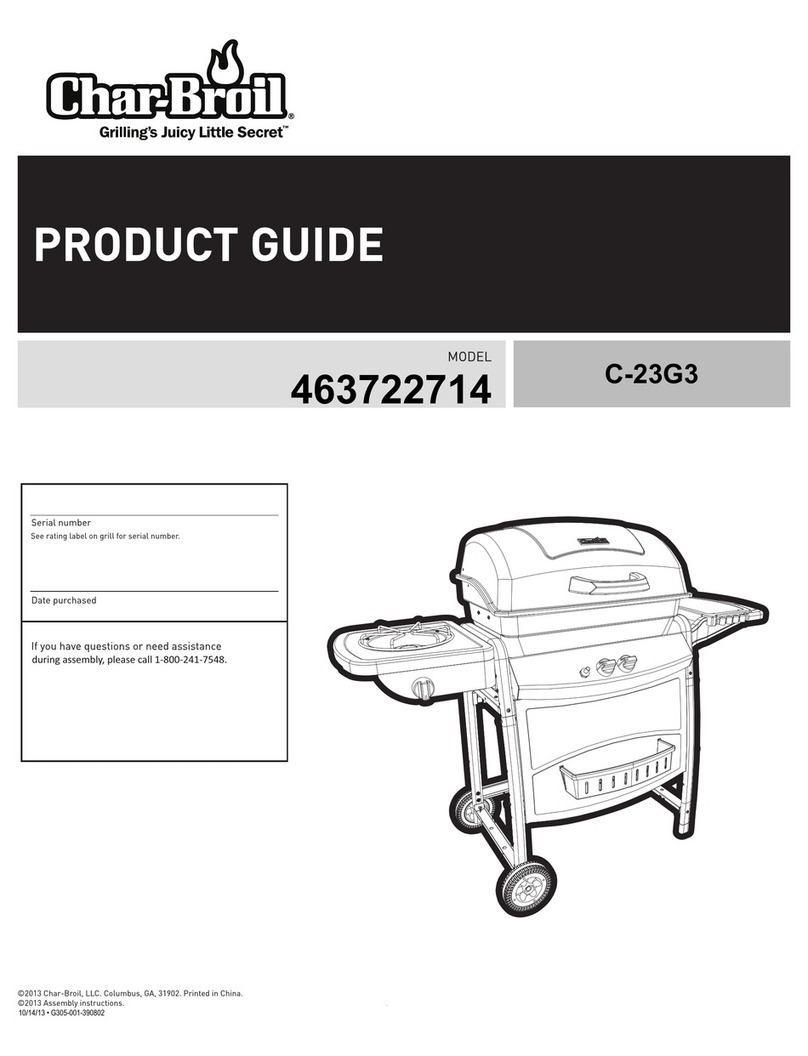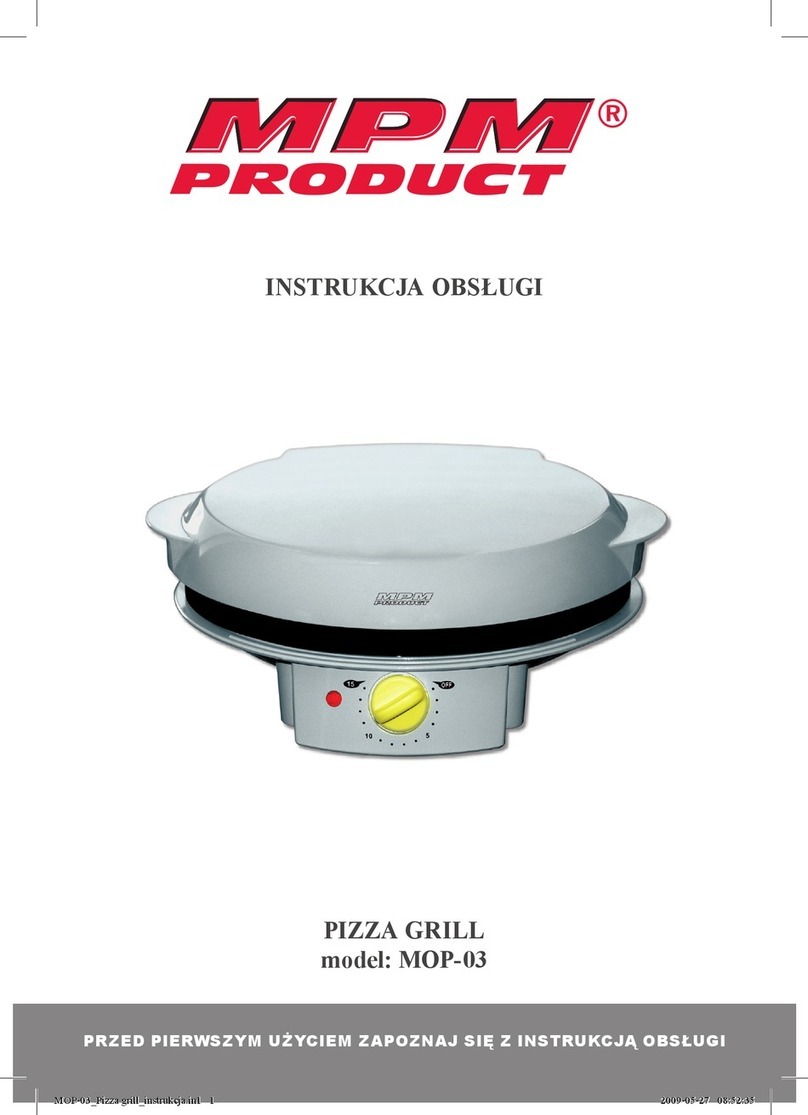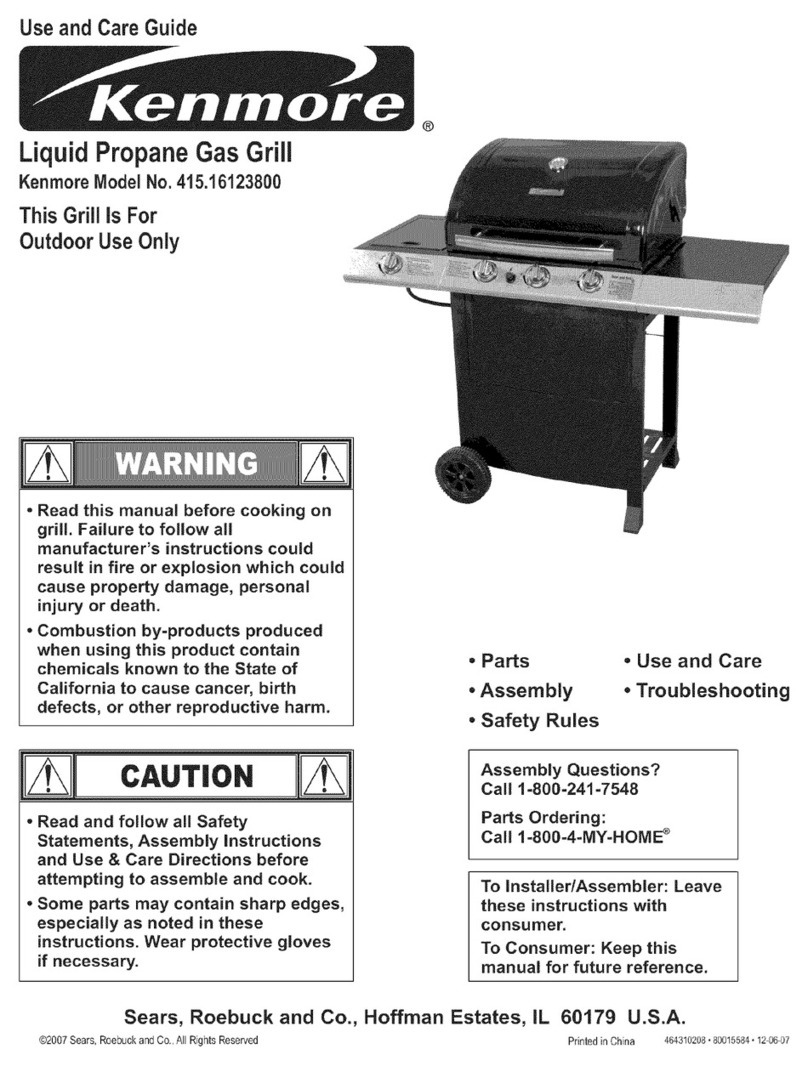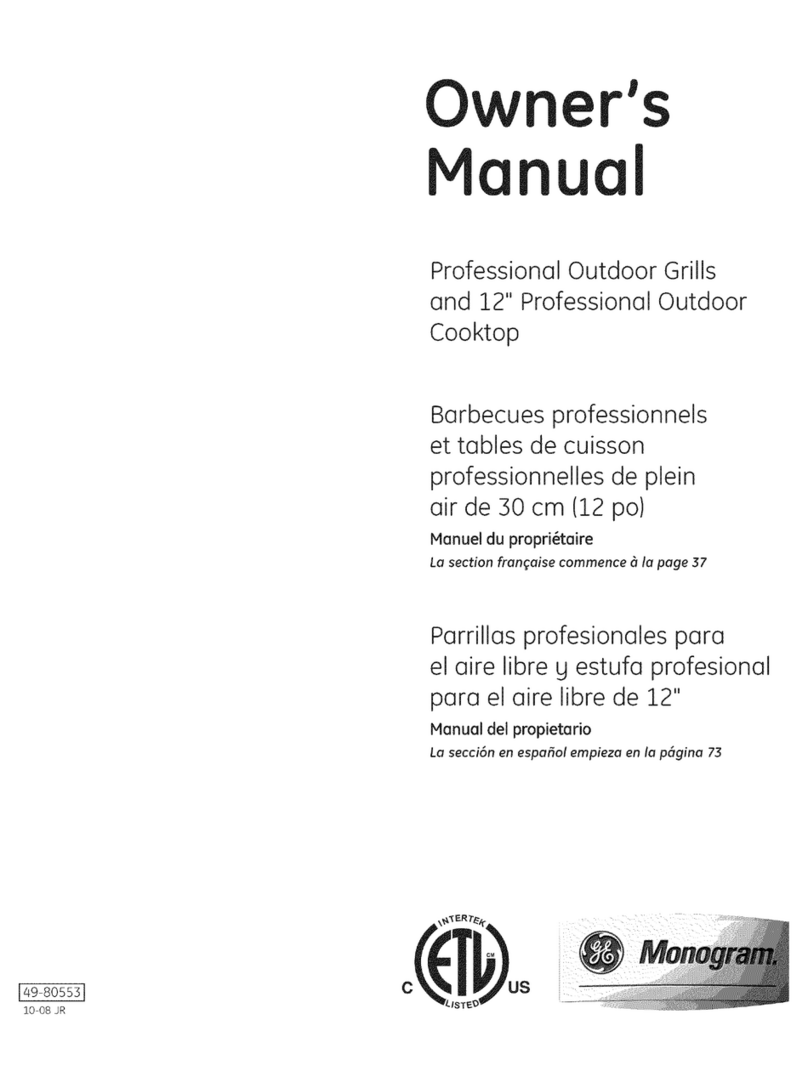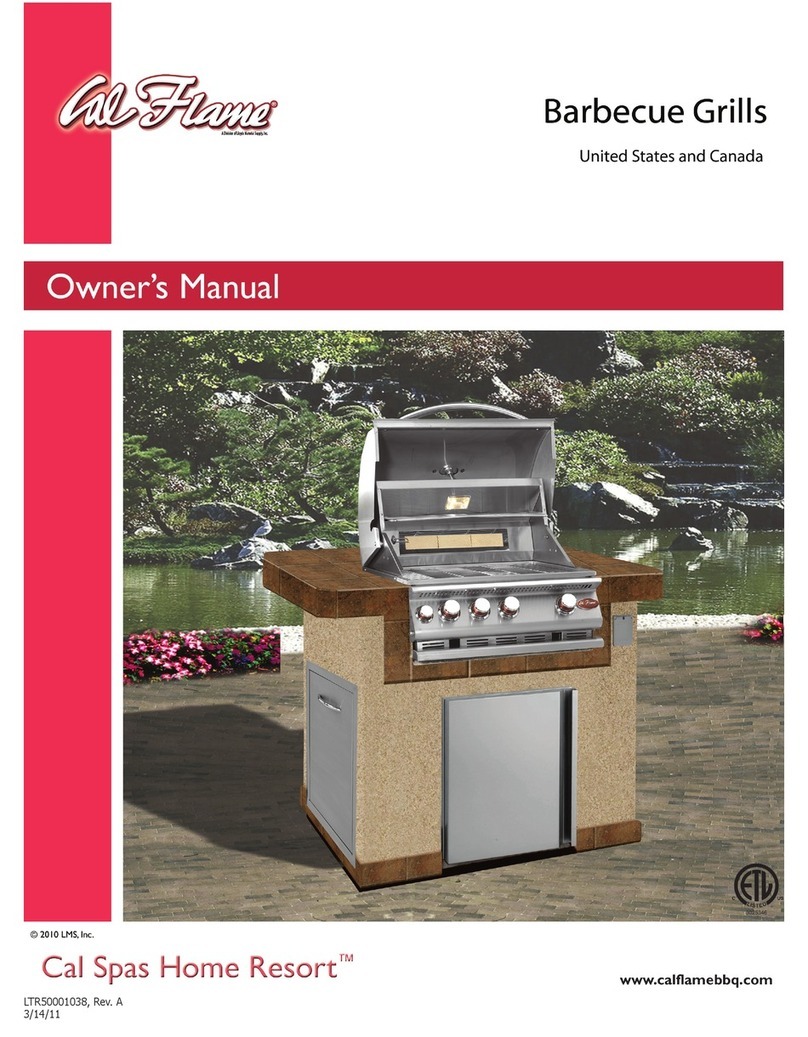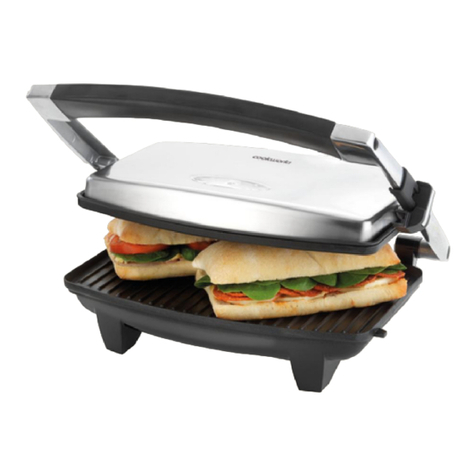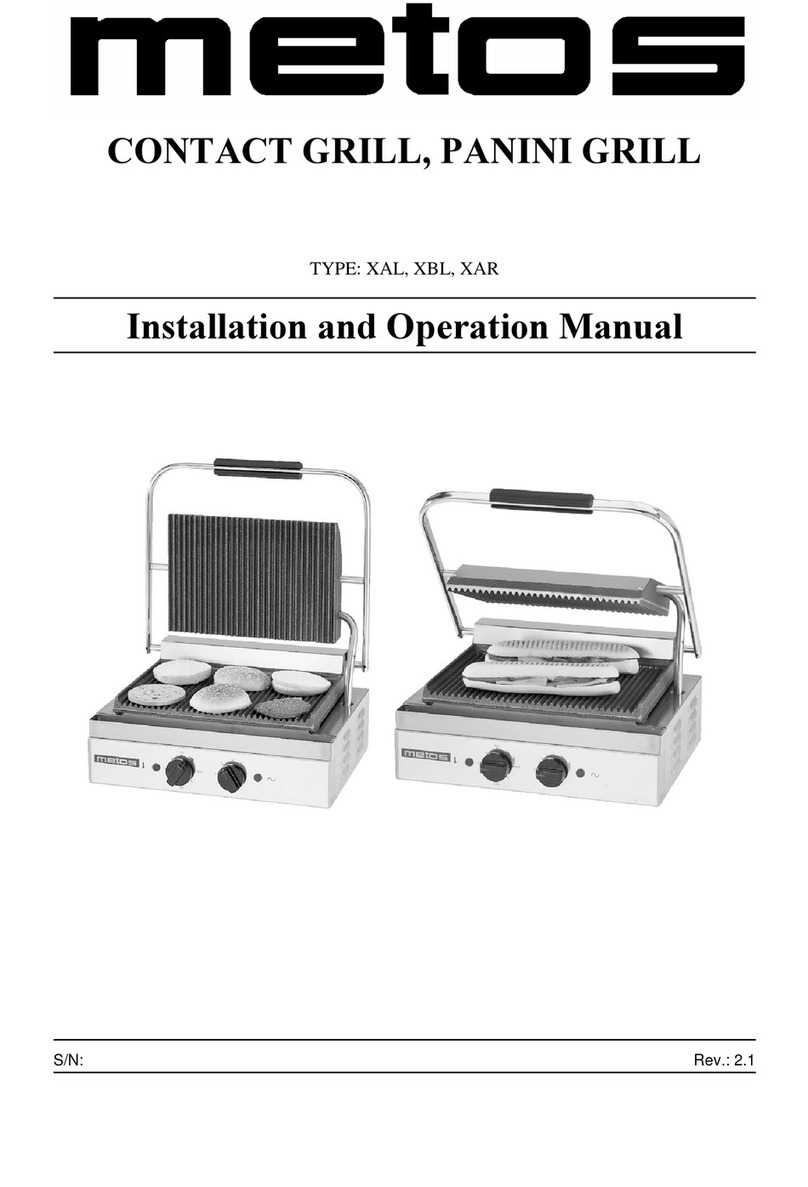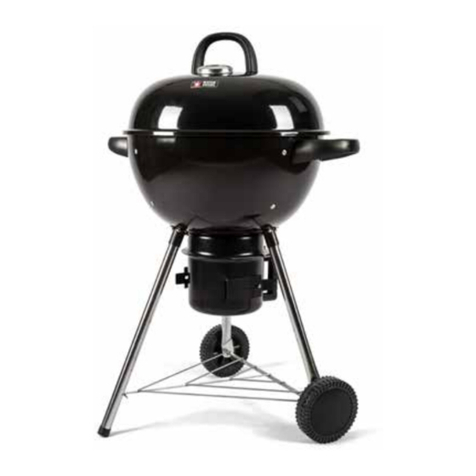
This barbecue can use either propane or butane or propane / butane mixed LPG (liquid petroleum gas)
bottled gas. Propane bottles, will supply gas all year round, even on cold winter days. Butane bottles will
supply sufficient gas in summer, but it may affect the performance of the barbecue and restrict the heat output
available from the burners, particularly once the gas temperature starts to fall below +10°C.Aspanner may be
required to change gas bottles. Check that you have the correct gas bottle and regulator for your barbecue.
Do not stand the gas bottle on the trolley base.
• The hose should hang freely with no bends, twisting, tension, folds, or kinks that could obstruct free flow
of gas. Always inspect the hose for cuts, cracks, or excessive wear before use.
• Apart from the connection point, no part of the hose should touch any hot barbecue parts. If the hose
shows any sign of damage it must be replaced with a hose suitable for use with LP gas which meets the
national standards for the country of use.
• The length of hose should not exceed 1.5 metres.
YOUMUSTHAVETHEPROPERREGULATORANDBOTTLEINORDERFORTHEBARBECUETOOPERATE
SAFELY AND EFFICIENTLY. USE OF AN INCORRECT OR FAULTY REGULATOR IS DANGEROUS AND
• Retain these instructions for future reference.
• This product is for outdoor use only. Do not use indoors.
• Do not use the barbecue or store gas bottles below ground level. LP gas is heavier than air so if a leak
occurs the gas will collect at a low level and could ignite in the presence of a flame or spark.
• For use with LPG bottled gas only. A suitable regulator must be used for butane, propane or mixes.
• Remove plastic wrap from any part before lighting.
• Do not use within 1m of any flammable structure or surface. Do not use under any combustible surface.
• LP gas bottles should never be placed directly underneath the barbecue.
• LP gas bottles should never be stored or used laid on their side, in the horizontal position.Aleak would be
very serious and liquid could enter the gas line with serious result.
• Never store gas bottles indoors.
• Do not move the appliance during use.
• Open the barbecue hood before lighting.
• Once lit, do not move the barbecue until it has completely cooled, after use.
• This barbecue must not be left unattended when lit.
• The hood handle can become very hot. Grip only the centre of the handle. Always use oven gloves when
cooking or carrying out any adjustments to the barbecue.
• Use purpose designed barbecue tools with long, heat resistant handles.
• Use caution when opening the hood, as hot steam inside is released upon opening.
• Warning: accessible parts may be very hot. Keep young children and pets away.
• Turn off the gas supply at the gas bottle after use.
• Never cover a barbecue until it has completely cooled.
• Use this barbecue only on a stable, flat surface.
• Before you use your barbecue, perform a leak test. This is the only safe and sure way to detect any gas
leaking from joints and connections of the barbecue after assembly.
• Leak test annually, and whenever the gas bottle is removed or replaced.
• Do not store flammable materials near this barbecue.
• Do not use aerosols near this barbecue.
• Failure to follow the manual’s instructions could result in serious injury or damage.
• Modification of the barbecue may be dangerous, is not permitted and will nullify any warranty.
• If you have any queries regarding these instructions, contact your local dealer.
Safety and Care Advice
Important Information
Gas & Regualtor and Hose
1
